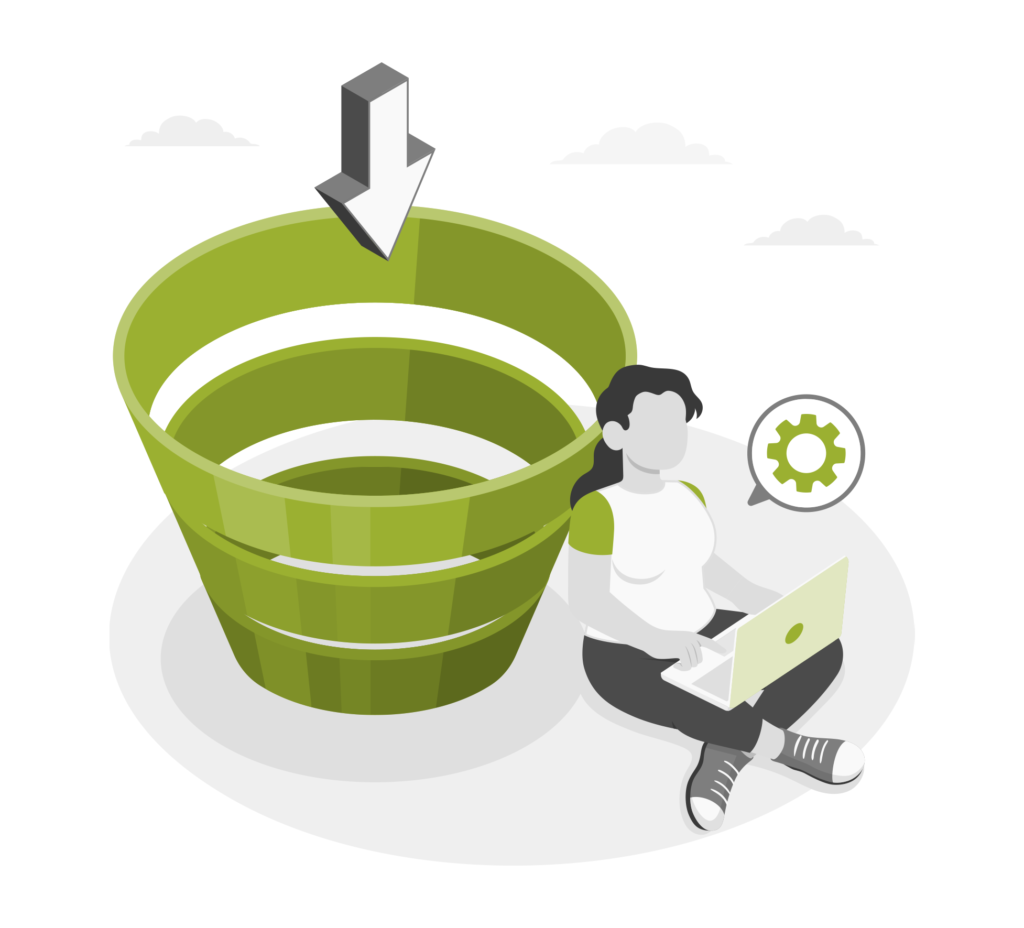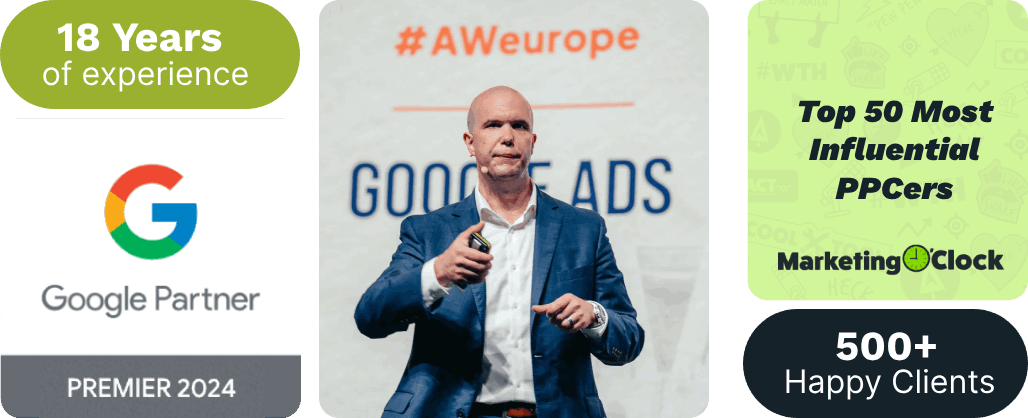What can we, as an agency, do to improve lead quality without increasing the cost for our clients? We are looking for a strategic solution to a problem that is a fairly common phenomenon.
Table Of Contents
Lead Quality Issues

Any lead generation client can have lead quality issues. It’s a common problem in today’s dynamic marketing world. While a particular client might garner a lot of leads, the quality of these leads might not always be the best.
The company does what it can to get more people to convert into paying customers. And in the meantime, we must also do our part to support the client. We’re going to look into how we can do this.
Let’s say a lead gen company has the ideal target market situation. They’d like to focus on this, but the market size is too small. This results in the algorithm spending much of the budget on high-level searches.
These include middle-of-funnel or top-of-funnel searches where people are not necessarily looking for the product or service itself, but where they could indicate a small interest in the product or service. There’s uncertainty about their intention.
It’s difficult to get the algorithm to spend the money and bid aggressively on quality keywords because it’s too busy putting money on low-quality keywords.
Bottom-of-funnel keywords are in high demand especially when the market is small and saturated and competitors are going after the same keywords.
Bottom-Of-The-Funnel Keywords

First, we’d like to take a look at the difference between ‘search keyword’ and ‘search term’. The search keyword is the phrase that we are targeting. We’ve chosen these keywords and we’ve already run them through phrase match, exact match, or broad match which are our different keyword match types.
The search terms are what the user is looking for. The algorithm matches what the user typed in on Google to our keyword. Is it a match made in heaven? Let’s find out.
Bottom-of-the-funnel keywords indicate that a person is ready to buy a product or service you are offering. When the budget is focused on bottom-of-the-funnel keywords, we can see which ones are the heavy lifters in our campaign.
When we sort by cost, bottom-of-the-funnel keywords usually rise to the top because those cost more per click. The reason for this is that you and all your competitors are going after these super high-quality people who know what they want. Their conversion rate is superior and so is their worth.
How To Get High-Quality Leads

The words themselves indicate how willing someone is. We’re talking about words that carry high intent. Words that are very specific and give little doubt as to what the user desires. Any client asking to have higher lead quality is essentially asking us to lean into these high-intent keywords.
A quick filter into our search terms refines the relevancy of our keywords and that can be very helpful in a campaign. We aim to spend more of the budget on bottom-of-the-funnel keywords.
How can we structure an account to try and force budget into these bottom-of-funnel keywords? And on a limited budget? A limited budget does not allow for an unlimited number of campaigns as you all know. We do not want to push too much of our budget onto middle-of-funnel or top-of-funnel keywords.
If we are already splitting the budget into industry-specific landing pages and general landing pages for general searches, ideally we need to create landing pages around different keywords and different industries. Pushing all the budget onto bottom-of-funnel keywords is not what we want to do.
Splitting Your Keywords

In addition to dividing the budget into specific landing pages and general landing pages, we would find it beneficial to also divide the budget into bottom-of-funnel keywords and middle-of-funnel keywords.
The purpose here is to put more budget than it can spend on the bottom-of-funnel keywords while also bidding aggressively on those same keywords. We are willing to pay double on cost per click for the bottom-of-funnel keywords than we are for middle-of-funnel keywords.
At this stage, an aggressive bid strategy would encourage the algorithm to go after the bottom-of-funnel keywords. Dedicating a budget exclusively for bottom-of-funnel keywords and splitting the keywords into two campaigns would help us do that.
Let’s say you have four existing campaigns currently running. Duplicating the campaigns without duplicating the budget is a great way to gain efficiency. So three campaigns have a shared budget while the dedicated budget is focused on the one campaign that is focusing on general and non-industry-specific that has a bigger market size.
We are going to share rather than split the budget. When there is a limited budget it creates a restriction within each campaign. We want to avoid giving a tiny budget to each campaign because there’s not enough bidding power right when it needs to get that hot lead or that potential customer. It will have run out of budget for the day. A shared budget can overcome this.
Duplicating Campaigns

Setting up two shared budgets, one for the bottom-of-funnel keywords and one for the middle-of-funnel keywords, will work when we clean up the search terms and make everything exact match to our high-intent keywords. Setting the bid strategy liberally means it will win against the competition on those high-intent keywords.
Now, we don’t want the campaigns to compete against each other for the same placement, so the next important step is to set the middle-of-funnel campaigns to exclude broad match negative keywords.
Middle-of-funnel campaigns will be a little more open-ended and broad match would suit it best. It cannot bid on any of our high-intent keywords. We already have a campaign for that. There is no need to waste budget or add to the competition.
We don’t want to share the bids. We are only interested in sharing the budget. Features will spend all the budget so we’re going to manipulate the bid in this campaign to give it less wiggle room and restrict its ability to spend within the shared budget. Let’s manage the bids on a per-campaign basis.
This is our strategy and solution to a common problem: what to do when you have a small market in your high-quality search terms and a big market in your middle-of-funnel and top-of-funnel search terms. We’ve found it to be effective and we hope you find it helpful too.
Thank you for following us on YouTube, and for more information, come and follow us on Solutions 8. We have a blog for everything ‘Google Ads‘ just for you.
Author
Jani is a copywriter at Solutions 8 with a passion for short stories, dancing under the stars, and 80s pop music. Her soul’s purpose is to turn herself into a masterpiece. Her future is filled with green fields, flowers, sunshine, and poetry.
 Jani Kahukiwa
Jani Kahukiwa











